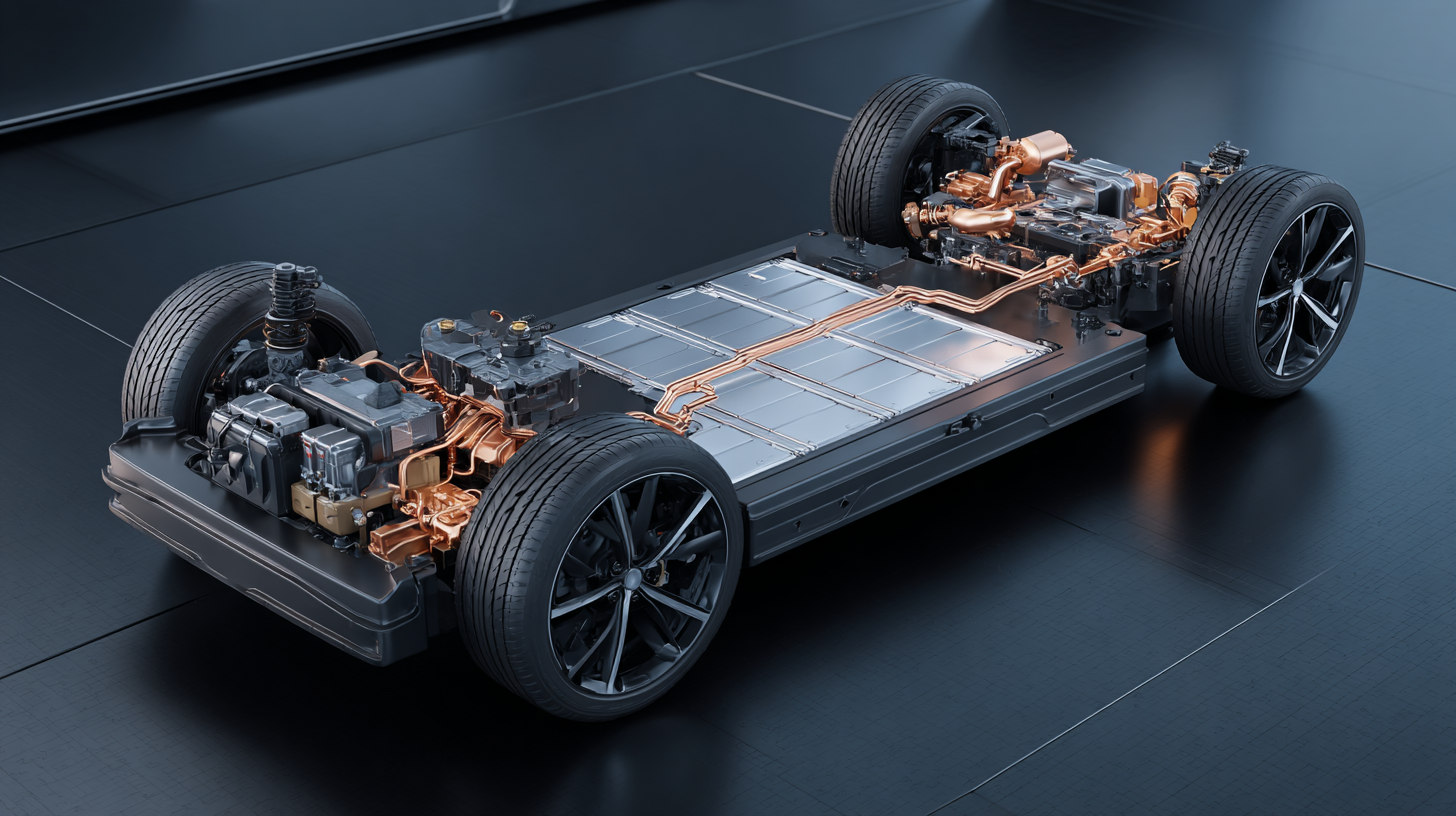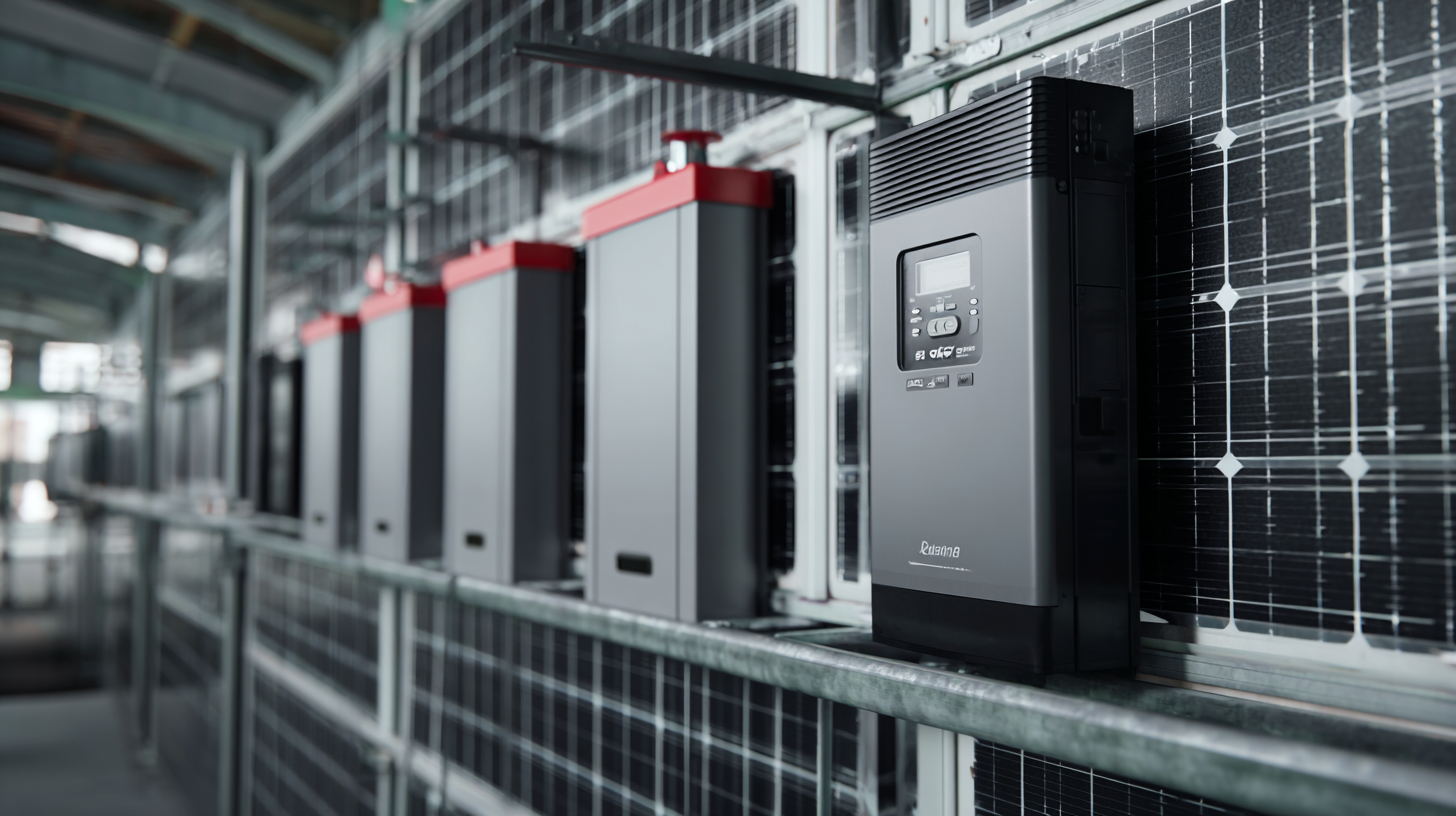
As the global demand for sustainable energy solutions continues to rise, innovative technologies such as the Lithium Slimline Battery are emerging as critical components in the quest for efficiency and environmental responsibility. According to a report by the International Energy Agency, the global lithium-ion battery market is projected to grow to over $90 billion by 2025, driven primarily by the surge in electric vehicle adoption and renewable energy storage systems. Lithium Slimline Batteries, recognized for their compact design and high energy density, are paving the way for more efficient energy management in both residential and industrial applications. As we explore the various solutions these advanced batteries offer, it is essential to understand their impact on sustainability and how they can help optimize our energy consumption while reducing carbon footprints.

 Lithium slimline batteries have emerged as a pivotal component in the pursuit of sustainable energy solutions. Their compact design and high energy density make them particularly suitable for various applications, from renewable energy storage systems to electric vehicles. One of the primary advantages of these batteries is their ability to maximize space without compromising performance. This is especially beneficial in urban environments where the demand for energy-efficient systems is increasing.
Lithium slimline batteries have emerged as a pivotal component in the pursuit of sustainable energy solutions. Their compact design and high energy density make them particularly suitable for various applications, from renewable energy storage systems to electric vehicles. One of the primary advantages of these batteries is their ability to maximize space without compromising performance. This is especially beneficial in urban environments where the demand for energy-efficient systems is increasing.
Moreover, lithium slimline batteries boast a longer lifespan compared to traditional battery technologies. With enhanced charging cycles and less frequent replacements, they not only provide cost savings but also contribute to reducing waste and resource use. Their efficient charging capabilities ensure that renewable energy sources, such as solar and wind, can be effectively harnessed and stored, making them an ideal choice for sustainable energy solutions. As society moves towards greener energy alternatives, the role of lithium slimline batteries is becoming increasingly significant in achieving a balanced and environmentally friendly energy future.
As we explore alternative energy sources, slimline batteries are emerging as a key component in the transition towards sustainable energy. These batteries, characterized by their compact design and improved efficiency, are reshaping how we think about energy storage. Innovations such as solid-state lithium technology are setting a new standard in performance, facilitating applications from residential energy systems to commercial installations.
When choosing slimline batteries for your energy needs, consider the following tips: Firstly, assess your energy storage requirements. Understanding your usage can help pinpoint the ideal capacity and type of battery. Secondly, investigate the latest advancements in battery technology. For instance, solid-state batteries offer enhanced safety and longevity over traditional lithium-ion alternatives, making them a worthwhile investment. Lastly, ensure compatibility with existing renewable energy systems like solar panels, as this integration maximizes efficiency and performance.
With the projected growth in the small Li-ion rechargeable battery market, it's clear that slimline batteries will play an essential role in sustainable energy solutions. Their versatility and efficiency are paving the way for a greener future, encouraging businesses and homeowners alike to adopt cleaner energy practices.

Lithium slimline batteries have emerged as a viable alternative to traditional battery technologies, particularly in the context of sustainable energy solutions. According to a report by the International Energy Agency (IEA), lithium-ion batteries can offer energy densities of up to 250 Wh/kg, significantly higher than lead-acid batteries, which provide approximately 50-80 Wh/kg. This increased efficiency not only enhances the performance of energy storage systems but also reduces the overall footprint required for installation, making lithium slimline batteries an attractive option for both commercial and residential applications.
Moreover, the lifespan of lithium slimline batteries typically ranges from 8 to 15 years, far surpassing the 3 to 5 years expected from traditional lead-acid counterparts. This longevity translates to reduced maintenance costs and less frequent replacements, which is particularly critical in renewable energy systems where reliability is paramount. According to the National Renewable Energy Laboratory (NREL), the use of lithium-ion technology could lead to up to a 40% reduction in overall lifecycle costs compared to conventional batteries, marking a significant shift toward more efficient energy storage solutions. As the demand for sustainable energy rises, it is crucial for consumers and industries alike to consider the advantages that lithium slimline batteries offer over traditional technologies.
The innovative applications of lithium slimline batteries are transforming the renewable energy landscape, paving the way for more compact and efficient energy storage solutions. Recently, several pioneers in battery technology have emerged, showcasing the potential of slimline batteries in various systems. These batteries are particularly advantageous for applications where space is limited, such as in off-grid settings, portable power sources, and electric vehicles. Their lightweight and streamlined design make them ideal for locations where traditional battery sizes may pose installation challenges.
For instance, recent advancements have resulted in ultra-slim lithium phosphate batteries that provide remarkable power density while occupying minimal space. Such technologies are increasingly essential for renewable energy systems, particularly in maximizing solar investments. Additionally, these batteries are gaining traction in residential energy storage, allowing homeowners to optimize their solar energy usage effectively. As the energy sector turns to renewable resources, the role of slimline batteries will become increasingly critical, emphasizing the need for innovative solutions that blend performance with sustainability.
The future of lithium battery technology is poised to revolutionize sustainable energy alternatives, catering to the increasing global demand for efficient energy storage solutions. As highlighted in the Global Lithium-Ion Battery Market report, the industry is expected to grow at a CAGR of 18.0% from 2021 to 2028, driven by advancements in battery chemistry and management systems. Emerging technologies, such as solid-state batteries, promise not only higher energy density but also enhanced safety and longevity, addressing many of the current limitations of traditional lithium-ion batteries.
One of the promising trends is the development of lithium-sulfur batteries, which have the potential to offer up to 500 Wh/kg, significantly higher than conventional lithium-ion cells. This advancement could enable the transition from fossil fuels to renewable energy sources in various sectors, including electric vehicles and grid storage systems. For individuals and businesses alike, adopting these next-generation batteries could lead to substantial cost savings and a reduced carbon footprint.
**Tips:** When considering lithium battery options, prioritize brands that emphasize sustainable sourcing of materials and offer recycling programs. Furthermore, staying informed on the latest technological advancements can help in making informed decisions that align with both economic and environmental goals. Always evaluate the specific energy needs of your application to choose the most efficient and effective battery solution.
| Battery Type | Energy Density (Wh/kg) | Cycle Life (Cycles) | Charge Time (hrs) | Cost ($/kWh) | Environmental Impact |
|---|---|---|---|---|---|
| Lithium Iron Phosphate (LiFePO4) | 90-160 | 2000-5000 | 6-8 | 300-400 | Low toxicity, recyclable |
| Lithium Nickel Manganese Cobalt (NMC) | 150-250 | 1000-2000 | 1-2 | 400-600 | Moderate toxicity, recyclable |
| Lithium Polymer (LiPo) | 150-200 | 300-1000 | 1-2 | 400-700 | Environmental concerns with disposal |
| Solid-State Lithium | 200-400 | 3000-7000 | 1-3 | 600-800 | Potentially less impact, still under research |